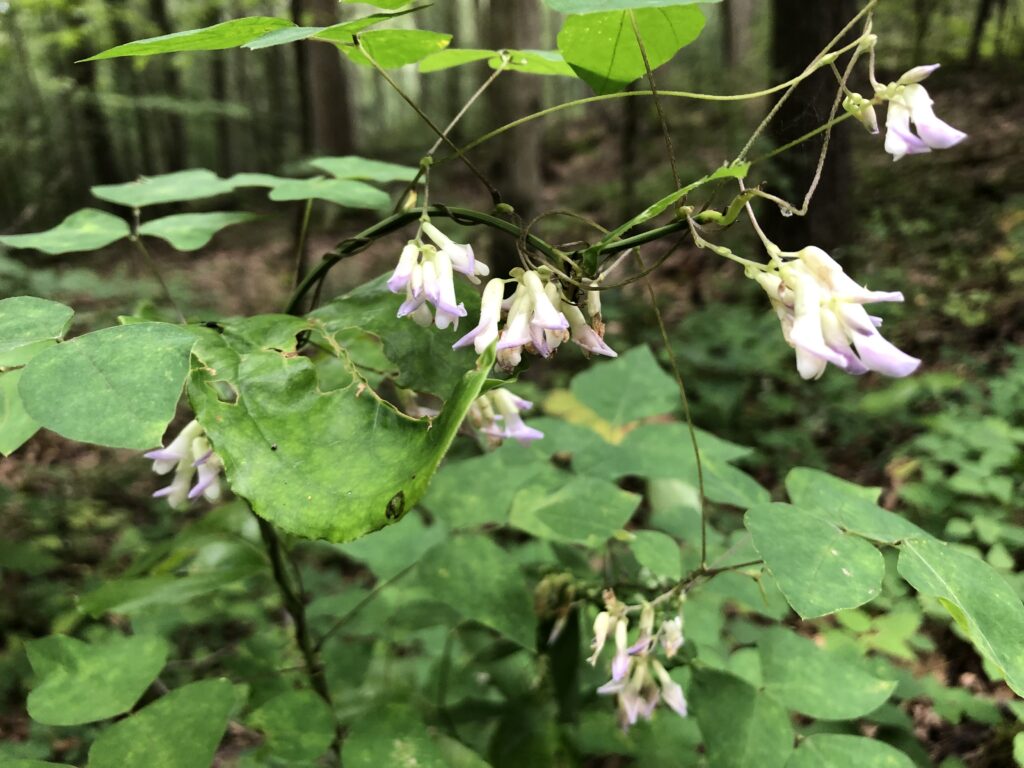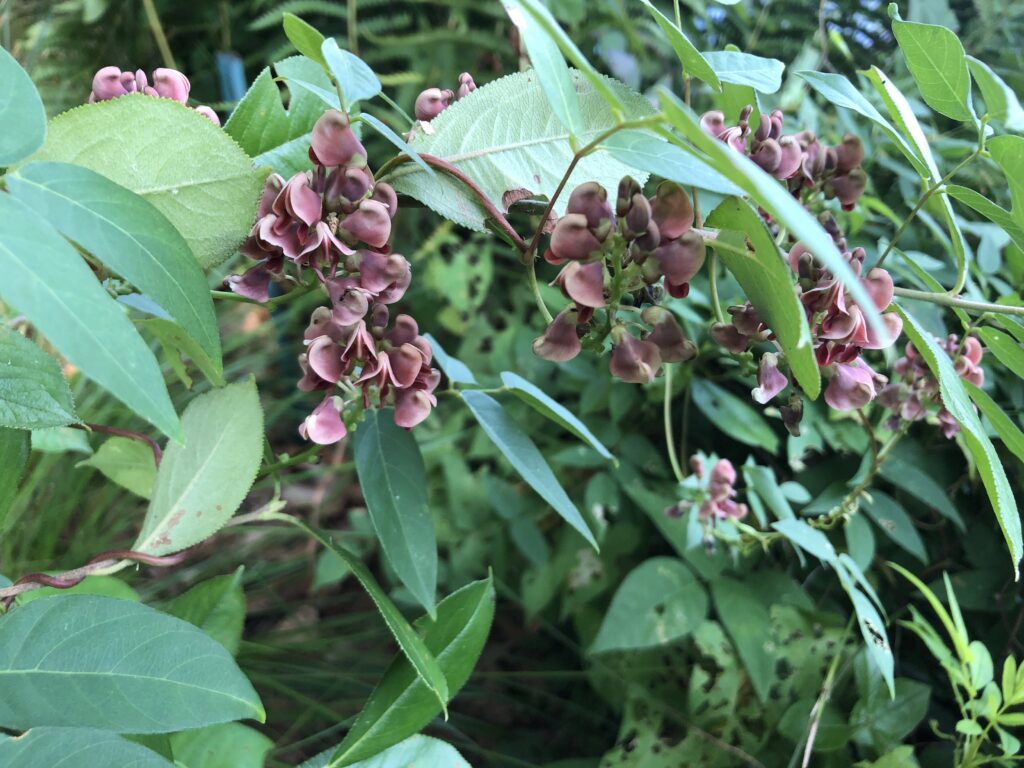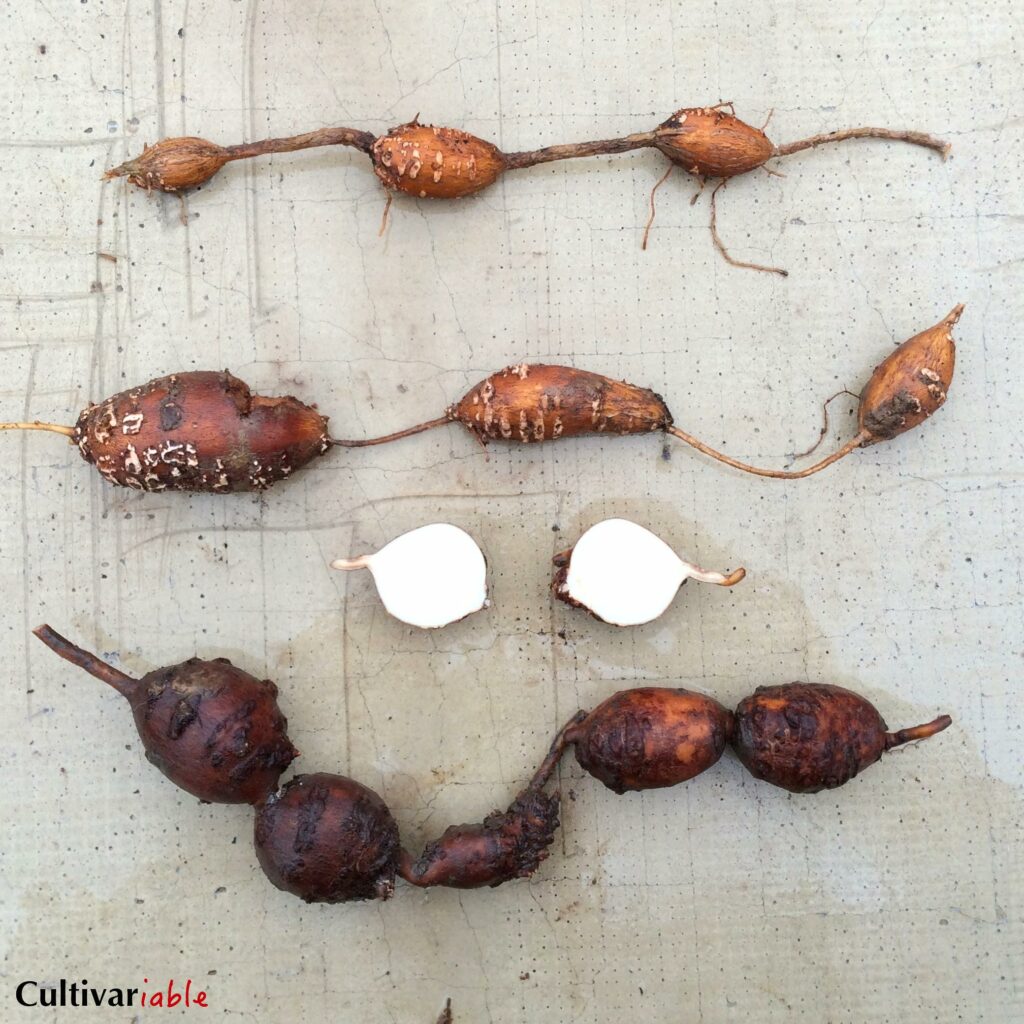
At this time of year, an unusual native vine blooms. Found in moist locations with partial to good sun. the “hog peanuty” (Amphicarpa bracteata) is a legume, meaning it is in the pea family. The flowers are small and the leaves resemble poison ivy. The vine winds around other plants to support itself without tendrils. Although small, showy blossoms up in the vegetation form clusters and range in color from white, through pink, to purple. These blossoms produce fruits like pea pods, usually with three or four seeds. The seeds are edible and can be used like lentils.

A second kind of blossom develops singly, close to the ground, where it are inconspicuous. This blossom does not open and is entirely self-pollinated. The pod pushes itself into the ground like the peanut plant (which is a distant relative from South America) and develops a single seed. Tradition holds that hogs favor these and root them out. In this photo, you see one of the edible “peanuts” that germinated underground to make a new seedling.
Another climbing legume that blooms now is ground nut, or hopniss, (Apios americana), also found in in moist soil and partial shade. This plant is more robust, with dense clusters of dark flowers, from maroon to brown, also producing edible seeds. However, the small tubers they produce are the real reward, and can be eaten like potatoes. It is commercially available as a specialty crop.

Much larger and robust, the ground nut is interesting enough to be an ornamental.


